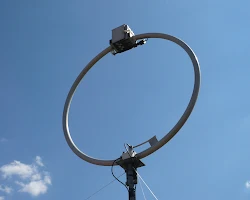Here are some do-it-yourself J antennas for 145 MHz drawings:
- J-pole antenna: A J-pole antenna is a simple and effective antenna that can be made from a few materials. It is a good option for beginners who are looking to build their own antenna.
To make a J-pole antenna, you will need:
* A piece of wire that is 1/4 wavelength long at 145 MHz.
* A connector for your radio.
* A way to mount the antenna.
The wire can be any type of metal, but copper is a good choice. The length of the wire will depend on the frequency you are using. For 145 MHz, the wire should be about 25 inches long.
The connector can be a BNC connector, PL-259 connector, or any other connector that is compatible with your radio.
The antenna can be mounted on a mast, a wall, or any other suitable surface.
- Terminated J-pole antenna: A terminated J-pole antenna is a variation of the J-pole antenna that has a resistor at the end of the antenna. The resistor helps to absorb the radio waves that are not transmitted or received by the antenna. This helps to prevent the antenna from radiating harmful interference.
To make a terminated J-pole antenna, you will need:
* A piece of wire that is 1/4 wavelength long at 145 MHz.
* A resistor that is rated for the power output of your radio.
* A connector for your radio.
* A way to mount the antenna.
The wire and resistor can be the same as for a standard J-pole antenna. The connector can be a BNC connector, PL-259 connector, or any other connector that is compatible with your radio.
The antenna can be mounted on a mast, a wall, or any other suitable surface.
- Folded J-pole antenna: A folded J-pole antenna is a variation of the J-pole antenna that has a second piece of wire that is folded in half. The folded wire helps to improve the radiation pattern of the antenna.
To make a folded J-pole antenna, you will need:
* Two pieces of wire that are 1/4 wavelength long at 145 MHz.
* A connector for your radio.
* A way to mount the antenna.
The wires can be the same as for a standard J-pole antenna. The connector can be a BNC connector, PL-259 connector, or any other connector that is compatible with your radio.
The antenna can be mounted on a mast, a wall, or any other suitable surface.
These are just a few examples of do-it-yourself J antennas for 145 MHz. There are many other designs available, and you can experiment to find the one that works best for you.
It is important to note that building your own antenna can be a challenging project. If you are not comfortable working with electrical equipment, you should consult with a qualified amateur radio operator.














